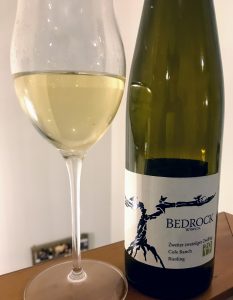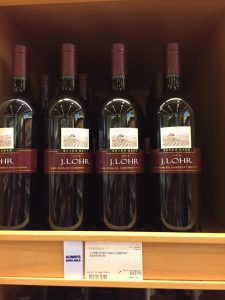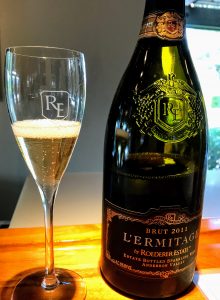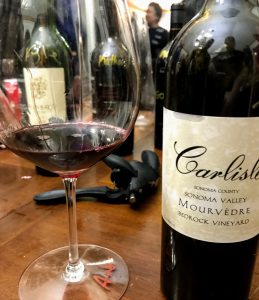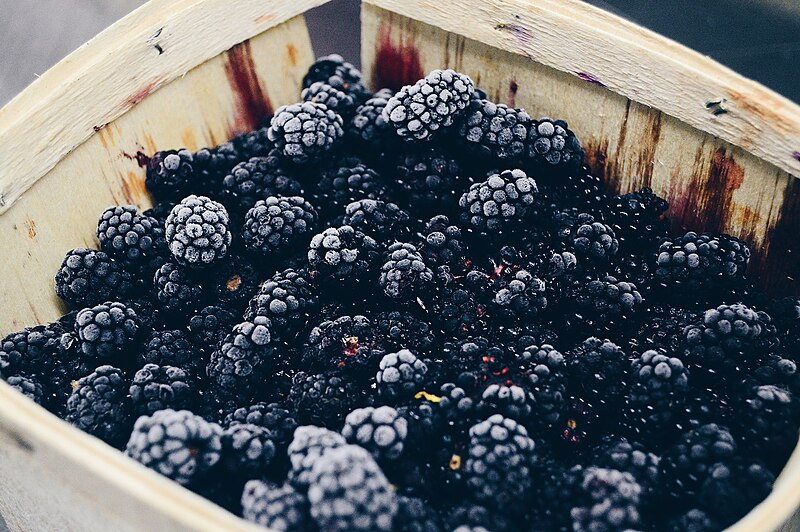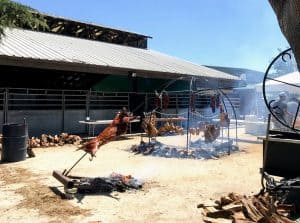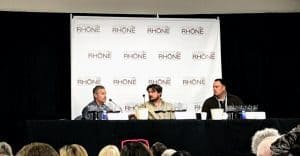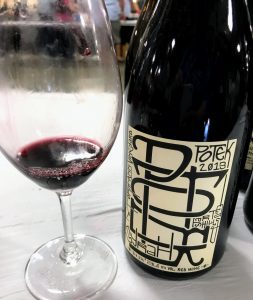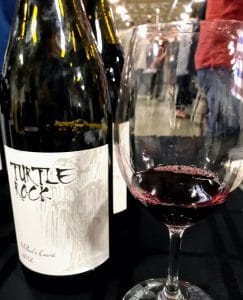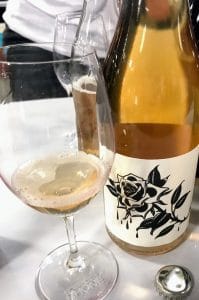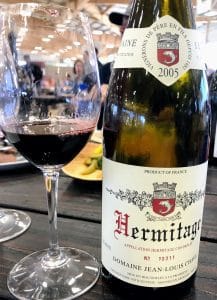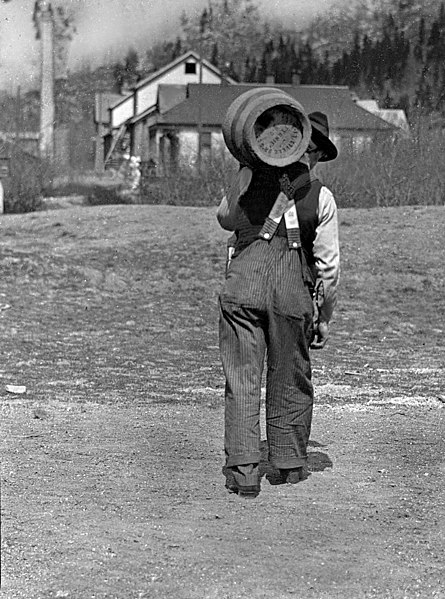
In 1915, on the eve of Prohibition in the United States, there were over 1300 breweries across the country. Collectively, they produced around 60 million barrels. While the growing behemoths of Anheuser-Busch and Pabst Brewing Company had national scale, the vast majority of these breweries were small regional players.
In 1940, seven years after the repeal of the Volstead Act, that number of breweries was nearly halved to 684. Yet the country was still producing almost 55 million barrels. However, production and distribution was rapidly being consolidated around the big breweries.
By 1980, there were only 101 breweries in the United States cranking out nearly 200 million barrels. The ten largest breweries were responsible for nearly 94% of that.
This was the state of the beer industry on the eve of the Craft Beer Movement. And it truly was a movement–one spearheaded by folks who only wanted something different from the mass proliferation of American lagers.
Chanpuru — “Something Mixed”
I’ve been binge watching Anthony Bourdain’s Parts Unknown, trying to get through all eight seasons on Netflix before it leaves their listings on October 1st.

Also good to know that the Okinawan diet includes plenty of beer!
The Season 6 episode on Okinawa, introduced chanpuru. Bourdain described this as the Okinawan idea of eating something different every day and enjoying the richness of variety.
Considering that the Okinawa diet and lifestyle is legendary for promoting long life and contentment, this was certainly a concept that resonated with me–especially being part of a generation that is notoriously “…open to new experiences, new regions and new grape varieties.”
Which brings us back to Zinfandel and the lessons of craft beer.
The craft beer category in the United States has evolved to encompass envelop-pushing styles and new ideas. However, at the root of the movement was a desire of beer lovers to get back what was lost before Prohibition. They wanted to reclaim the traditional styles and varieties of beers that existed before. All across the country were unique brews that were influenced by local German, Austrian, Irish and Latin immigrant communities.
The majority of beer drinkers had “moved on” and were content with their mass-produced lagers. But a tiny segment of passionate beer lovers knew that this country’s brewing heritage was a worthwhile story to explore. If the big brewers weren’t going to explore it, then these beer lovers were going to take the mantle themselves.
They not only found their chanpuru but made it their own.
Heritage Vines — Heritage Wines

Zinfandel vineyard first planted in 1910 in Saratoga, California. Even the “young” 1976 vines are over 40 years old.
First introduced to California during the Gold Rush of the 1850s, Zinfandel has always been an American wine with an immigrant’s story–likely coming to the US as a Croatian vine (now known to be Crljenak Kaštelanski/Tribidrag) that was part of an Austrian nursery collection.
Once the grape reached California, it was spread widely across the state–particularly by Italian immigrants who established numerous old vine vineyards in the North Coast that are still treasured today.
The Hungarian immigrant Agoston Haraszthy, the “Father of California Viticulture,” didn’t bring Zinfandel to the US. However, as Thomas Pinney notes in his A History of Wine in America, Volume 1, Haraszthy did much to propagate and promote the variety.
By 1888, Zinfandel was the most widely planted wine grape in California with around 34,000 acres. Even after Prohibition, Zinfandel still maintained significant plantings with Master of Wine Benjamin Lewin noting in Claret and Cabs that in the mid 20th century, Zinfandel far outpaced Cabernet Sauvignon in Napa Valley with many Napa “clarets” actually being Zin-based.
It wasn’t until the 1980s that Chardonnay (and in the 1990s Cab) eventually surpassed Zinfandel as the most widely planted variety in California. However, with over 44,000 acres, Zinfandel remains the third most widely planted grape in California.
A Sleeping Giant
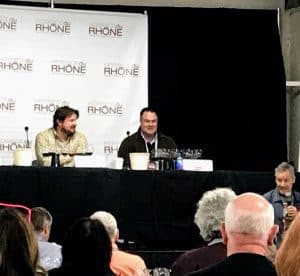
Master of Wine Morgan Twain-Peterson of Bedrock Wine Co. and Tegan Passalacqua of Turley Wine Cellars both serve on the board of the Historic Vineyard Society. Here they are giving a presentation on old vine vineyards at the 2018 Hospice du Rhone.
Interwoven within those 44,000+ acres are plots of old vine Zinfandel that are increasingly being highlighted by wine producers and organizations like the Historic Vineyard Society.
Scattered across the state of California–from Sonoma to Amador County, Lodi to Paso Robles, Santa Clara Valley to Cucamonga Valley–each of these old vine vineyards are planted with stories that span several decades. In the case of the Zinfandel vines in the Grandpere Vineyard in the Sierra Foothills, those stories have been shared for nearly 150 years.
For a generation of consumers that crave experience and authenticity, connection and chanpuru–few wines can craft a better calling card for Millennial wine drinkers than Old Vine Zin (the real stuff, not the marketing fluff–which is fodder for another post).
But are Millennial drinkers interested?
Perhaps.
Two articles that came across my Twitter dash today provoked this post. In one, Mike Veseth (@MikeVeseth) examined trends in the US Wine Market highlighted by Nielsen data was reported in Wine Business Monthly. In the other, Winesearcher.com’s Liza B. Zimmerman wrote about the big takeaways from the recent Silicon Valley Bank’s State of the Wine Industry report.

I found it curious that this grocery store display of “Beginner’s Wines” under $20 didn’t feature any red wines–only Chardonnay, Sauvignon blanc and Riesling.
After noting Cabernet Sauvignon and Chardonnay’s sustained dominance in both case volume and sales value, Veseth was surprised to find that the number one variety regarding average bottle price in the United States was Zinfandel at $11.19 a bottle–beating out Pinot noir’s $10.43 average. Along with his surprise, Veseth expressed a desire to see more research into this development.
Of course, correlation does not imply causation and all that. But maybe there is a link between this and the Millennial “frugal hedonist” described in Zimmerman’s WineSearcher.com piece.
While the under $9 category of wines is slumping, adventurous Millennial drinkers are branching out more into the $8-14 range. Like craft beer drinkers before, Millennial drinkers are willing to spend a little bit more. But it has to be something that appeals to their wanderlust hedonism and cravings for what new and interesting.
Few varieties offer a better (or more frugal) bang for the buck in quality than Zinfandel.
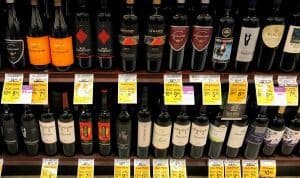
Yeah….I’ve been low on Merlot. But given these options, you really can’t blame me for heading over to the Zin aisle.
There is not a huge quality gap between an $8 Cabernet Sauvignon, Merlot or Pinot noir and a $14 example. However, when you get to Zinfandel, there is a much more noticeable jump in quality. Try tasting a $8-9 Bogle and Seven Deadly Zins against $12-14 examples from the Sobon and Maggio-Reynolds families. Even relatively large wineries like Ravenswood, Klinker Brick and St. Francis make tremendous Zins in that range.
The jump to $15-25 Zinfandels also offers exponentially higher quality than you find in Cabs, Merlot and Pinots. Offerings from wineries like Rosenblum, St. Amant, Seghesio, Truett Hurst, Carol Shelton, Ridge and Renwood are drenched in value.
Then when you start exploring the character-driven wines of single vineyard, old vine Zinfandels from producers like Turley, Bedrock, Carlisle, Bella, Robert Biale and the higher-end Ridge wines, you find heaps of wines in the $40-60 range that would blow most $100+ Napa Cabs out of the water.
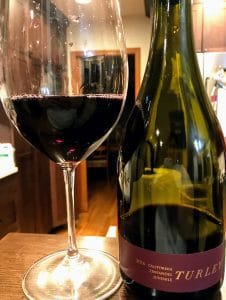
Even Turley’s entry-level Juvenile Zin at $30-38 offers more character and complexity than a lot of Cabernets twice its price.
Now I’m not saying that cheap, crappy Zin doesn’t exist.
If there is a dollar to be made and a brand to be mass produced, you know that one of the big mega-corps are going to capitalize on it.
Just look at what has happened to the craft beer segment which has become a feeding frenzy of acquisitions by the big beer firms trying to conquer the craft market by gobbling up brands like old European powers colonizing Africa and the New World. Just as beer drinkers have to be open-minded, but weary, so too should wine drinkers. They will always be well served by frequently asking who made the wine that is in their glass.
Still, these mass-produced (and sometimes “faux old vine”) Zins aren’t all bad. A mass-produced cheap Zin is on par with a mass-produced cheap Cab, Merlot or Pinot. If not better.
Above all, what I am saying is that there is a special heritage here in the United States with Zinfandel. It’s a heritage too valuable to be lost to the dust bin of history.
Just like craft beer drinkers reclaimed their heritage, we also have an opportunity to reclaim a bit of ours. We can stick with the same ole, same ole or add a little chanpuru to our drinking options.
